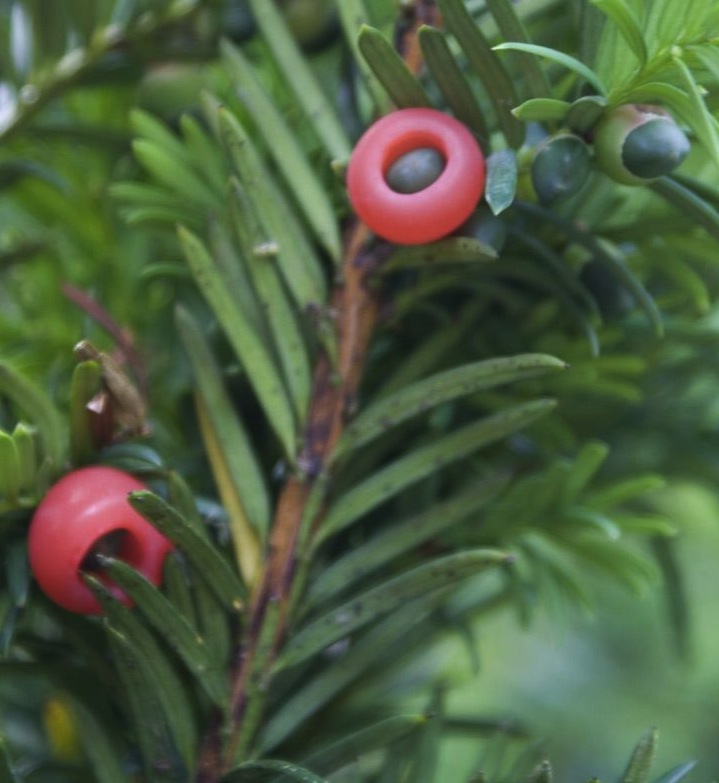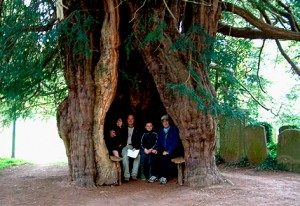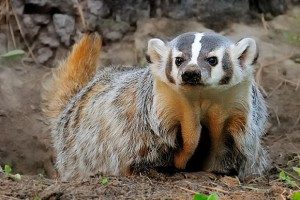The Yew can kill you, very quickly.
Did that get your attention? Good. It should. There is only one safe, small part of the tree that is edible. The rest is toxic. What’s edible? The fleshy aril around the seed. The seeds are NOT edible though those who have eaten them have said before they died that the seeds had a good flavor. The same has been said of deadly mushrooms and fatal water hemlock. What do chewed seeds do? They stop your heart. Any questions? The leaves are toxic as well killing, besides humans, horses, cattle and pigs. Taxine alkaloids (A and B) are thought to inhibit heart depolarization. The largest concentration is in the seeds.
While the aril has a firm texture it falls apart once removed from the seed, is watery and sweet but with almost no flavor. Get your fingers messy: Don’t even think about putting it all in your mouth then spitting the seed out. That’s too dangerous. Take the aril, which looks like a little cup, off the seed, throw the seed away, then eat the aril. I would not be surprised to learn the arils has antioxidants. While the aril is edible the flavor and texture are not WOW. They’re okay… barely. It’s a lot of danger to approach for little pay off.
Now, what if you swallow one seed whole? Those who know say it will probably pass through without a problem. Personally, I would rather throw up than take the chance, or have the stomach pumped out. Chewed seeds or a few ounces of leaves will definitely kill you, or a horse. How toxic is the tree? It is favored by bow makers, and has been since ancient times. However there are reports of some bow makers being killed by the tree’s toxins because they handle the wood so much. Oh… did I mention the yew is a common landscaping ornamental? Surrounding ones house with a deadly hedge is not a good idea.
Poisoning symptoms can include difficulty walking, muscle tremors, convulsions, collapsing, difficult breathing, coldness and heart failure. However the toxin works so quickly some of those symptoms might be skipped. Dead animals are often found with twigs or leaves still in their mouth.
That said the Yew tree has a lot of history behind it. The word itself is ancient Germanic and means brown, like the bark. The oldest piece of worked wood in the world is a Yew spearhead dated 450,000 years old. Within written times the European Yew was dedicated to the Erinyes or Furies, goddesses of vengeance for human punishment. Caesar referenced a Celtic leader named Eburones who poisoned himself with Yew rather than submit to Rome. The Roman historian Florus said that in 22 BC the Cantabrians on the coast of northern Spain killed themselves by sword, fire or Yew rather than surrender to the legate Gaius Furnius. The Astures, also of Spain, when under siege at Mons Medullius also chose to die by Yew than be captured. Yews are among the oldest trees in Britain with several over 1,000 years old and one perhaps 4,000 years old.
Cornucopia II lists two Yews. Of the Taxus baccata (the English Yew) it says on page 240 “the bark is used as a substitute for tea. Fruits are sometimes eaten, however the seeds are considered poisonous.” And of the Taxus cuspidata (the Japanese Yew) it says: “the sweet aril, or fruit pulp, is eaten raw, made into jam, or brewed into wine. Caution is recommended, as the seeds of many species are poisonous.”
All that said Ethnobotanist Dr. Daniel Austin reports the native species were used by Indians for medicine. Eastern tribes used the Taxus canadensis in minute amounts for tea to treat rheumatism, bowel ailments, fevers, colds, scurvy, to rid clots, as a diuretic and to expel afterbirth. However, Dr. James Duke in 2002 wrote T. baccata, T. brevifolia and T. canadensis are too toxic to be used as medicine.
The study of plants is also the study of language and history. The yew genus is Taxus. That comes from either taxic or toxic which in Greek means “that in which arrows are dipped.” Interestingly the Greek word for bow is toxon and for the Yew taxos. One can see and hear the connection of these words for over 4,000 years. By the way the animal called the Badger is Taxidea taxus, which means” the badger hides in the yew forest.” I think it is one of a few or the only case in which a plant and an animal have similar scientific names. And while the little fellow to the left looks cute Badgers are renowed for their ill-temper and brass.
Most Yews used in landscaping are either the European Yew or the Japanese Yew. There are three native Yews to North America, T. brevifolia, T, canadensis, and T. floridana.
Green Deane’s Itemized Plant Profile: Yew
IDENTIFICATION: An evergreen, bark reddish-brown, thin, flaking in thin scales; leaves linear, stiff, one-half to one inch long, two ranked, on twigs; upper surface dark green, lower surface yellow-green, midrib prominent. Fruit comprised of a single stony seed mostly surrounded by a bright scarlet, thick, ovoid, fleshy cup, the whole .5 to .75 inches long.
T. baccata, the European yew, hardy north to New York, T. cuspidta hardy into southern Canada, T. brevifolia, the western yew, to 75 feet high, forests, wooded slops and ravines, central California to Montana, British Columbia and Alaska. T. canadensis, ground hemlock, likes marshes, spreading shrub rarely more than 5 feet high, deep woods, Kentucky north to Canada. Taxus floridana is so rare we’ll leave them alone. Yews are mostly found in yards as an ornamental.
TIME OF YEAR: Summer to fall
ENVIRONMENT: Varies by species
METHOD OF PREPARATION: Aril raw. The seeds are deadly. Read that sentence again: The seeds are deadly. Indeed, the entire plant is deadly except for the aril.





